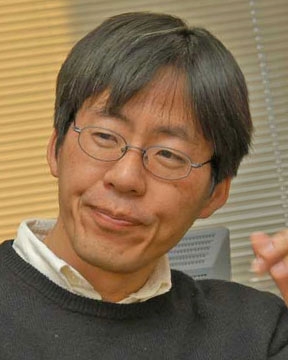



















 |
Yuichi ShimakawaKyoto UniversityOxygen Incorporation And Release Behaviors In Perovskite-structure Oxides Tressaud International Symposium on Solid State Chemistry for Applications and Sustainable Development Back to Plenary Lectures » |
Abstract:Oxygen ions are incorporated in and released from transition-metal oxides when the valence states of the transition-metal ions change [1]. In topotactic changes of perovskite-structure oxides like SrFe2+O2 - SrFe3+O2.5 - SrFe4+O3, we found that the oxygen incorporation and release behaviors are strongly influenced by the structural factors. The A-site disordered perovskite (La1/3Ca2/3)FeO3 with unusually high valance Fe3.67+ releases oxygen gradually above 500°C, whereas the A-site-layer-ordered perovskite LaCa2Fe3O9 with the identical chemical composition of (La1/3Ca2/3)FeO3 readily releases oxygen around 400°C [2,3]. From the B-site-layer-ordered double perovskite Ca2FeMnO6 with Mn4+ and unusual high valence Fe4+, oxygen is released only form the two-dimensional Fe-O layers according to the successive changes of Ca2Fe4+Mn4+O6 - Ca2Fe3.5+Mn4+O5.75 - Ca2Fe3+Mn4+O5.5. The B-site-disordered Ca2(FeMn)O6, on the other hand, oxygen appears to be released at about 390°C by a single change of Ca2(Fe4+Mn4+)O6 - Ca2(Fe3+Mn4+)O5.5 [4,5]. Thus, the oxygen release behaviors differ depending on both A-site and B-site cation order. An important point for the behaviors of oxides with unusually high valence cations like Fe4+ is that the incorporation and the release of oxygen can occur at much lower temperatures than those with typical valence transition-metal ions. We will discuss the details of such behaviors from temperature-dependent structure analysis. References:[1] Y. Shimakawa, Bull. Chem. Soc. Jpn. 86, 299-311 (2013). |
|